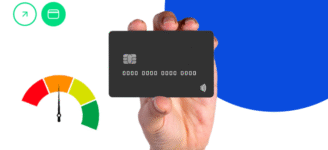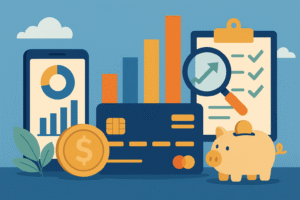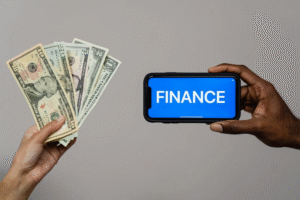Dynamic interest rates: what are they, how do they work and what are they for?
Find out what dynamic interest rates are, how they work in the US, and why they affect loans, cards, and the economy in general.
Understand the details of dynamic interest rates

Have you ever wondered why the interest rates on your credit card, loan or mortgage vary so much over time? This may be the result of so called dynamic interest rates, a model widely used in the United States that has a direct impact on the economy, credit and consumers’ pockets. But what are these rates, how do they work and why are they so important?
Want to understand more details about them? In this content, we will explain everything in a simple and objective way so that you can stay up to date!
What Are Dynamic Interest Rates?
Dynamic interest rates, also known as variable or adjustable rates, are rates that do not remain fixed over time.
Instead, they fluctuate based on certain benchmark indexes, such as the base rate set by the Federal Reserve (the U.S. central bank), or other financial indicators like the prime rate (the rate banks charge their most creditworthy clients).
In practice, this means that the amount a consumer pays in interest can increase or decrease during the life of the loan, depending on changes in the broader economic environment.
How Do They Work in Practice?
In the United States, dynamic rates are common in various types of financial contracts. Some of them are included in:
- Student loans;
- Real estate financing (mortgages);
- Credit cards;
- Revolving lines of credit;
- Personal loans.
These rates work as follows: when the consumer contracts a financial service with a dynamic interest rate, he agrees that the interest may be adjusted periodically.
Typically, there is an initial period with a lower rate (known as the introductory period), and then the rate begins to vary according to the reference index plus a margin (spread).
Practical example
Imagine that you take out a mortgage with a dynamic interest rate. The contract stipulates that the rate will be “LIBOR + 2%”. This means that if the LIBOR rate is 3%, you will pay 5% per year. But if LIBOR rises to 4%, your interest rate automatically increases to 6%.
What are dynamic interest rates for?
Dynamic interest rates have several purposes and advantages within the US economy. Below, we have provided a list so you can understand their functions in more detail. Take a look below!
1. Encouraging Credit and Consumer Spending During Low Interest Periods
When the Federal Reserve keeps interest rates low, dynamic rates also drop, making credit more affordable. This encourages consumers to borrow money for homes, cars, or education, which helps stimulate the economy.
2. Adapting Loan Costs to Economic Conditions
In times of rising inflation, the Fed raises interest rates to slow down the economy. Dynamic interest rates help lenders pass on these increases to borrowers, which helps protect banks and reduce financial risk.
3. Offering Lower Initial Rates
One of the main advantages for borrowers is that dynamic rates often start lower than fixed interest rates. This can be attractive to people who plan to pay off their loans early or expect rates to stay low for a while.
4. Increasing Competition Among Lenders
Because banks compete for customers, offering dynamic interest rates allows for more flexible credit options, better tailored to each person’s risk profile and financial goals.
Dynamic Rates and U.S. Monetary Policy
In the U.S., the Federal Reserve uses the Federal Funds Rate as its primary tool to control inflation. When this rate increases, many loans with dynamic interest rates also rise.
This creates a chain reaction: credit becomes more expensive, consumer spending slows, and inflation tends to decrease.
For this reason, dynamic interest rates serve as a real time reflection of monetary policy decisions, directly impacting the financial lives of individuals and businesses.
Conclusion
Dynamic interest rates are one of the most commonly used mechanisms in the U.S. to balance credit markets and control the economy.
They offer flexibility but require consumers to be cautious. Understanding how they work, the risks involved, and when they might be advantageous is key to making smart financial decisions.
If you’re considering taking out a loan, opening a credit card, or investing in the U.S. market, remember: knowing what kind of interest rate you’re dealing with can make a big difference in your financial health.






